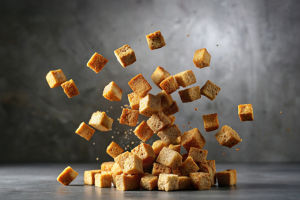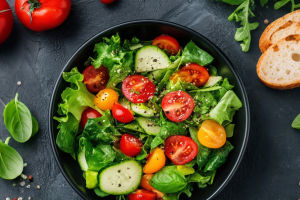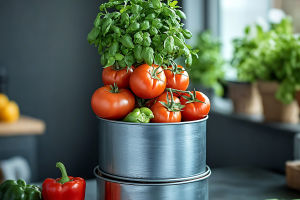Sweets often bring to mind rich creams, eggs, and butter—the classic pillars of many desserts. But what if you could enjoy desserts that are just as indulgent, yet completely free of dairy and eggs?
Vegan desserts have quietly transformed from niche offerings into mainstream favorites, offering a fresh way to experience sweetness that feels light, wholesome, and surprisingly satisfying.
What makes vegan desserts stand out isn't just what they leave out, but what they bring in: innovative plant-based ingredients that add texture, flavor, and nutrition. If you've ever wondered how to create desserts that are creamy and rich without dairy, or fluffy without eggs, you're about to discover some of the best-kept secrets in vegan baking.
The Vegan Advantage: More Than Just "No Dairy, No Eggs"
At first glance, vegan desserts might seem like simply a way to exclude animal products. But they're really about embracing plant-powered ingredients that add unique benefits:
• Nut butters and seeds contribute healthy fats and natural creaminess.
• Aquafaba (the liquid from cooked chickpeas) can be whipped to mimic egg whites, creating lightness.
• Coconut milk and avocados provide rich, velvety textures with added fiber and nutrients.
• Natural sweeteners like maple syrup and date paste offer complex sweetness without refined sugars.
Nutritionist Emily Stokes explains, "Plant-based desserts often have a better nutrient profile, including fiber, antioxidants, and good fats, which can help moderate blood sugar and keep you fuller longer." This means vegan sweets can be indulgent without the usual sugar crash or heaviness.
1. Crafting Creamy, Egg-Free Custards and Puddings
One of the biggest challenges in vegan dessert making is replicating the creamy, silky texture of custards that normally rely on eggs. The secret? Using silken tofu or blended avocado combined with natural thickeners like cornstarch or agar-agar.
For example, a simple vegan chocolate pudding can be made by blending silken tofu with melted dark chocolate, a splash of vanilla, and maple syrup. Chill it, and you'll have a dessert that's just as creamy as the traditional version, but lighter and dairy-free.
Why it works: The tofu acts as a neutral canvas with a smooth mouthfeel, while natural thickeners give body without heaviness.
2. Whipping Up Fluffy, Eggless Cakes and Muffins
Without eggs, achieving the rise and fluffiness of cakes can seem tricky. But nature provides clever alternatives:
• Aquafaba whipped into stiff peaks creates volume and lightness.
• Flaxseed or chia "eggs" (ground seeds mixed with water) add binding and moisture.
• Carbonated water or apple cider vinegar with baking soda react to create air bubbles.
Try a simple vegan vanilla cupcake recipe using these techniques and you'll find the texture is delightfully airy and tender.
Tips for success: Avoid overmixing batter, and always test your baking powder's freshness to ensure maximum rise.
3. Naturally Sweetening Without Refined Sugar
Most vegan recipes emphasize natural sweeteners for their added health benefits and flavor depth. Ingredients like:
• Date paste adds caramel-like richness and fiber.
• Maple syrup offers a subtle earthiness that pairs well with spices and nuts.
• Coconut sugar brings a mild, buttery sweetness with a low glycemic index.
Registered dietitian Sarah Mitchell notes, "Natural sweeteners can provide more nutrients than white sugar, but portion control is still key. Combining them with fiber and protein helps balance blood sugar."
This means vegan desserts don't just taste good; they can support steady energy and avoid sudden sugar spikes.
Building Your Vegan Dessert Toolbox
The secret to vegan dessert success is to think creatively about textures and flavors, not just ingredients. Start with a few key staples:
1. Silken tofu or avocado for creaminess.
2. Aquafaba and flax eggs for structure.
3. Natural sweeteners like dates and maple syrup.
4. Coconut milk or nut milks for richness.
5. Whole grains and nuts for added texture and nutrition.
Once you have these, you can experiment freely—blend a cashew cream, whip up a flaxseed muffin, or layer a chia seed pudding with fresh fruit.
The next time dessert cravings hit, you might try a vegan recipe that challenges your idea of what "sweet" really means. The beauty of vegan desserts lies not just in what they exclude, but in how they invite you to explore new ingredients and textures.
What's the most surprising vegan dessert you've tasted—or created? If you haven't tried one yet, which recipe will you experiment with first? Sharing your experience could inspire someone else to discover the delicious world of plant-powered sweets.


